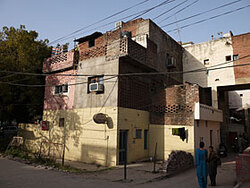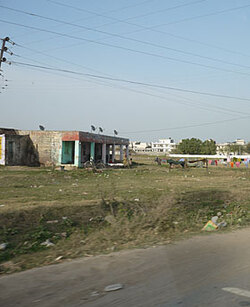Chandigarh has grown into a world-famous monument of modernism, but in 2030 the city will have a population that is more or less three times greater than the 500,000 inhabitants for which it was originally intended. The city is confronted with ‘urban villages’, slums and rapid, fragmented urbanization due to the city’s growing prosperity. The ‘New New Towns’ Program is investigating how the city and the greater metropolitan region can respond to this growth.
Where and especially how to provide sufficient housing for approximately 500,000 new inhabitants in the next decades? Chandigarh initially embodied not only the modernization of Indian society, but also the social ideal of housing for all social classes. This ambition is now well behind the overall growth of new residents simply because commercial benefit prevails. The ‘New New Towns’ Program will enable Dutch and Indian students to study the original spirit underneath Chandigarh’s master plan and building typologies in order to understand how they incorporated change and flexibility from the very beginning. Furthermore, the students will take the institutional framework and policy administration into consideration to comprehend everyday management of the city. The program will subsequently build upon the perceived strengths and connect them to the present social, spatial and economic dynamics. ‘New New Towns’ will ultimately use alternative design proposals and strategic area development to put housing for all layers of society back on the agenda of governments and project developers.
Background
India gained its independence in 1947. After the definition of the new national boundaries, the then province of Punjab was divided between Pakistan and India. However, this division left the Indian section without a provincial capital and in 1948 the authorities decided to realize a New Town: Chandigarh. The city logically acted as the new political headquarters, but it also served to house thousands of refugees. Le Corbusier was responsible for its urban master plan, with further input from Pierre Jeanneret, Maxwell Fry, Jane Drew, Narinder S. Lamba and J.C. Verma. The construction of Chandigarh began in 1953 and the city was one of the first New Towns constructed in India. For the poor and politically unstable India, the New Town embodied belief in the future, the nation’s newly acquired independence and modernization. In this way, Chandigarh quickly became a showcase project.

EWS (Economically Weaker Section) housing in Sector 37 in Chandigarh. How to put housing for all layers of society back on the agenda of governments and project developers?

By now the city of Chandigarh is confronted with ‘urban villages’, slums and rapid, fragmented urbanization within the region, due to the promotional effect of the high level of prosperity







